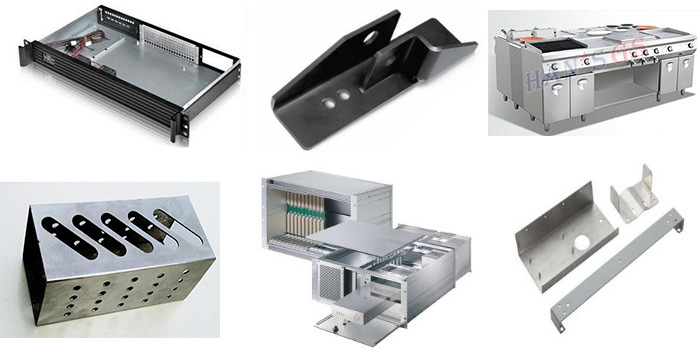The sheet metal industry is one of the most important application markets for laser processing. In order to comply with the development trend of the international market, the transformation of processing technology is inevitable. This is laser cutting machine, laser welding machine, laser marking machine and other laser equipment in sheet metal. The application of the industry provides a vast space.

What is sheet metal?
So far, there is no more complete definition of sheet metal.
1, according to a foreign professional journal analysis, can be defined as: sheet metal is a comprehensive process for the metal sheet (usually below 6mm), including shear, punch / cut / composite, folding, welding, riveting, splicing, Forming (such as car body), the prominent feature is the same thickness of the same part.
2. Interpretation of the "Modern Chinese Dictionary (5th Edition)" - sheet metal: Verb, which processes steel plates, aluminum plates, copper plates and other metal plates.
The relationship between sheet metal and fiber laser cutting machine
China has gradually become an international processing and manufacturing center. With the continuous increase in foreign investment, the demand for metal processing continues to increase. In the metal processing industry, electrical control boxes and machine housings are generally sheet metal parts, so sheet metal processing is required. The demand for capacity has also been increasing; along with this, the complexity of the process is also relatively high, and even some parts processes have reached as many as dozens of ways. In terms of precision, higher demands are placed on sheet metal processing.
Some people say that fiber laser cutting machines are standing on the shoulders of giants. It first began to rise in developed countries abroad, and led to the rapid development of its related manufacturing industries. China has begun to catch up in recent years, and it has already surpassed the rest in the field of fiber laser cutting machines. This achievement has enabled China to shorten the gap between high-end manufacturing and foreign high-end equipment manufacturing. It is even possible that China's high-end equipment manufacturing will catch up with foreign high-end equipment manufacturing technology, and fiber laser cutting machines will help China's manufacturing industry achieve leapfrog development.
The disadvantages of traditional sheet metal processing
Traditional sheet metal processing technology: Shear-blanket-bend-welding process or flame plasma cutting-bending-welding process. In the face of orders of multiple varieties, small batches, customization, high quality and short delivery time, the traditional sheet metal processing methods have obvious deficiencies:
1. (CNC) shearing machine can only be used in sheet metal processing that only requires linear cutting because it is mainly linear cutting;
2. (CNC / brick tower) punches have limitations on the cutting of steel sheets with a thickness of 1.5mm or more, and the surface quality is not good, the cost is high, noise is high, and it is not conducive to environmental protection;
3, flame cutting as the first traditional cutting method, when the cutting hot deformation, cutting width, waste of material, processing speed is slow, only suitable for roughing;
4. The high speed water cutting process is slow, causing serious pollution and high cost of consumption.
Fiber laser cutting machine advantages

For the problems existing in the traditional sheet metal cutting at this stage, the demand for laser cutting is also increasing.
1. Laser cutting has a high degree of flexibility, fast cutting speed, high production efficiency, and short production cycle time. No matter if it is a simple or complex part, it can use laser to realize a rapid prototyping and cutting.
2, narrow slits, good cutting quality, high degree of automation, easy operation, low labor intensity, safety and environmental protection;
3, can achieve automatic cutting and nesting materials, improve the material utilization, no tool wear, good material adaptability;
4, low production costs, good economic returns.


 中文
中文 English
English France
France العربية
العربية русский
русский español
español português
português srpski језик
srpski језик Việt Nam
Việt Nam
 中文
中文 English
English France
France العربية
العربية русский
русский español
español português
português srpski језик
srpski језик Việt Nam
Việt Nam






